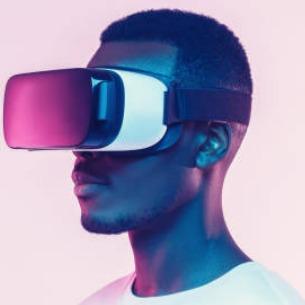Bumpin'
A revolutionary platform to improve oneself using XR!
Created on 8th January 2023
•
Bumpin'
A revolutionary platform to improve oneself using XR!
The problem Bumpin' solves
Introduction
The VR Public Speaking Simulator is an innovative tool designed to help individuals overcome their fear of public speaking. The project provides a virtual reality environment where users can practice their public speaking skills and build their confidence in a safe and supportive space. The VR experience is designed to simulate a real-life public speaking scenario, allowing users to face their fears and develop the skills they need to succeed.
Key Features
Immersive VR environment that replicates a public speaking scenario
Customizable audience and settings to match the user's comfort level
Realistic feedback system that provides constructive criticism on the user's performance
Virtual coach that provides tips and advice to help the user improve their skills
Progressive difficulty level that adapts to the user's progress, providing a challenging but manageable experience
Requirements
The VR Public Speaking Simulator requires a VR headset and a compatible device, such as a PC or a gaming console. The project is compatible with a range of VR headsets, including the Oculus Quest, the HTC Vive, and the Playstation VR.
Conclusion
The VR Public Speaking Simulator is an innovative solution that provides users with an opportunity to practice their public speaking skills in a supportive and immersive environment. Whether you are a seasoned speaker or just starting out, the VR experience provides a unique and effective way to build confidence, overcome your fears, and become a better speaker. So, put on your VR headset and start your journey towards confident public speaking today!
Challenges we ran into
Challenges faced in developing the VR Public Speaking Simulator
Technical difficulties: Developing a VR environment that accurately replicates a public speaking scenario was a major technical challenge. The team had to ensure that the VR experience was both realistic and immersive, while also providing real-time feedback to the user.
User experience: Designing an experience that was both challenging and supportive was critical. The team had to strike a balance between providing enough difficulty to challenge the user and making the experience accessible to people with a wide range of public speaking abilities.
VR hardware compatibility: Ensuring that the VR Public Speaking Simulator was compatible with a range of VR headsets was a challenge. The team had to take into account the different hardware specifications and software requirements of each headset, as well as ensuring that the experience was optimized for each device.
Realistic feedback: Providing realistic feedback was another challenge. The team had to design a feedback system that accurately reflected the user's performance and provided constructive criticism that was useful and actionable.
Virtual coach: Designing a virtual coach that was both helpful and engaging was a challenge. The team had to find a way to provide the user with useful tips and advice that would help them improve their public speaking skills, without being overly prescriptive or boring.
Despite these challenges, the team was able to develop a VR Public Speaking Simulator that meets the needs of users and provides an effective and enjoyable solution for overcoming public speaking anxiety.
Technologies used
